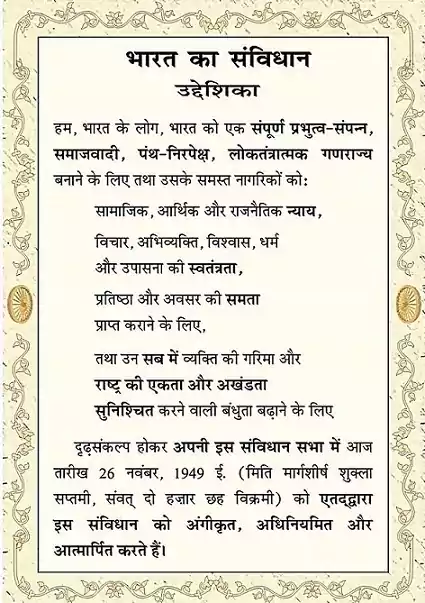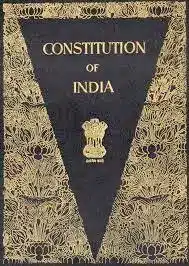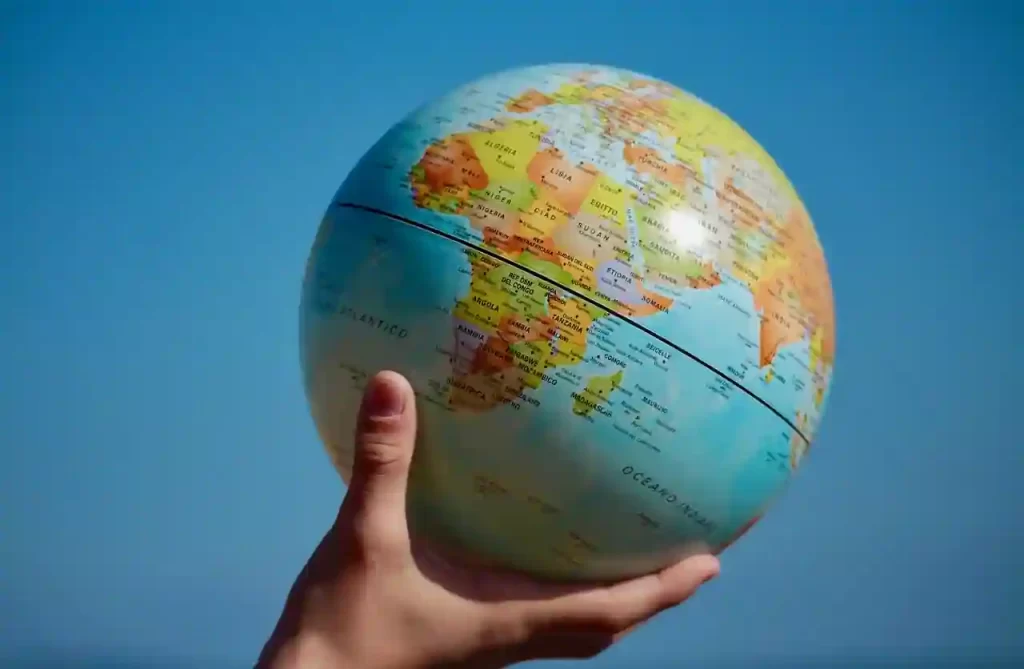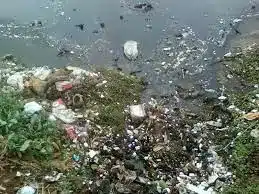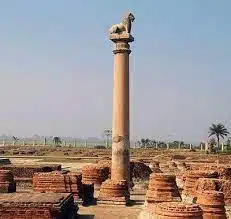Important MCQs On Astronomy:

1. On 21st June, the Sun
(a) Does not set below the horizon at the Arctic Circle
(b) Does not set below the horizon at Antarctic Circle
(c) Shines vertically overhead at noon on the Equator
(d) Shines vertically overhead at the Tropic of Capricorn
Answer : (a)
2. What is the difference between asteroids and comets?
1) Asteroids are small rocky planetoids, while comets are formed of frozen gases held together by rocky and metallic material
2) Asteroids are found mostly between the orbits of Jupiter and Mars, while comets are found mostly between Venus & Mercury
3) Comets show a perceptible glowing tail, while asteroids do not
Which of the statements given above is/are correct?
(a) 1 and 2 only
(b) 1 and 3 only
(c) 3 only
(d) 1,2 and 3 only
Answer : (b)
3. Which one of the following planets has largest number of natural satellites or moons?
(a) Jupiter
(b) Mars
(c) Saturn
(d) Venus
Answer : (c), (Source : NASA)
4. In order of their distances from the Sun, which of the following planets lie between Mars & Uranus?
(a) Earth and Jupiter
(b) Jupiter and Saturn
(c) Saturn and Earth
(d) Saturn and Neptune
Answer : (b)
5. What is the average distance (approximate) between the Sun & the Earth?
(a) 70 x 105 km
(b) 100 x 105
(c) 110 x 106 km
(d) 150 x 106 km
Answer : (d)
6. (Assertion): To orbit around the Sun, the planet Mars takes lesser time than the time taken by the Earth
(Reason): The diameter of the planet Mars is less than that of the Earth
(a) Both A are R are true R is the correct explanation of A
(b) Both A and R are true but R is not a correct explanation of A
(c) A is true but R is false
(d) A is false but R is true
Answer : (d)
7. (Assertion): The same face of the Moon is always presented to the Earth
(Reason): The Moon rotates about its own axis in 231/2 days which is about the same time that it takes to orbit the Earth
(a) Both A are R are true R is the correct explanation of A
(b) Both A and R are true but R is not a correct explanation of A
(c) A is true but R is false
(d) A is false but R is true
Answer : (c)
8. Among the following which planet takes maximum time for one revolution around the Sun?
(a) Earth
(b) Jupiter
(c) Mars
(d) Venus
Answer : (b)
9. Which one of the following statements is correct with reference to our solar system?
(a) The Earth is the densest of all the planets in our solar system
(b) The predominant element in the composition of Earth is silicon
(c) The Sun contains 75 percent of the mass of the solar system
(d) The diameter of the Sun is 190 times that of the Earth
Answer : (a)
10. If the stars are seen to rise perpendicular to the horizon by an observer, he is located on the
(a) Equator
(b) Tropic of Cancer
(c) South Pole
(d) North Pole
Answer : (a)
11. A “Black Hole “is a body in space which does not allow any radiation to come out. This property is due to its
(a) Very small size
(b) Very large size
(c) Very high density
(d) Very low density
Answer : (c)
12. One Astronomical Unit is the average distance between
(a) Earth and the Sun
(b) Earth and the Moon
(c) Jupiter and the Sun
(d) Pluto and the Sun
Answer : (a)
13. A person stood alone in a desert on a dark night and wanted to reach his village which was situated 5 km east of the point where he was standing. He had no instruments to find the direction but he located the polestar. The most convenient way now to reach his village is to walk in the
(a) direction facing the polestar
(b) direction opposite to the polestar
(c) direction keeping the polestar to his left
(d) direction keeping the polestar to his right
Answer : (c)
14. What is the approximate mean velocity with which the Earth moves round the Sun in its orbit?
(a) 20km/s
(b) 30km/s
(c) 40km/s
(d) 50km/s
Answer : (b)
15. Which one of the following scholars suggests the earth’s origin is from gases and dust particles?
(a) James Jeans
(b) H Alfven
(c) F Hoyle
(d) O Schmidit
Answer : (d)
16. Sun’s halo is produced by the refraction of light in
(a) Water vapour in Stratus clouds
(b) Ice crystals in Cirro-Cumulus clouds
(c) Ice crystals in Cirrus clouds
(d) Dust particles in Stratus clouds
Answer : (c)
17. Consider the following statements regarding asteroids:
1) Asteroids are rocky debris of varying sizes orbiting the Sun
2) Most of the Asteroids are small but some have diameter as large as 1000 km
3) The orbit of asteroids lies between the orbits of Jupiter & Saturn
Which of the statements given above is/are correct?
(a) 1,2 and 3 are correct
(b) 2 and 3 are correct
(c) 1 and 2 are correct
(d) 1 and 3 are correct
Answer : (c)
18. Who among the following proposed Helio-centric model of solar system?
(a) Copernicus
(b) Ptolemy
(c) Aristotle
(d) Strabo
Answer : (a)
19. The planet whose density is less than water and on keeping in the water it will start to float:
(a) Mercury
(b) Saturn
(c) Venus
(d) Mars
Answer : (b)
20. Halley’s comet completes one revolution around the sun in:
(a) 40 years
(b) 46 years
(c) 60 years
(d) 76 years
Answer : (d)
21. Which is the nearest of the sun?
(a) Beta centaury
(b) Alpha centaury
(c) Gamma centaury
(d) Proxima centaury
Answer : (d)
22. Geo centric model of solar system was proposed by:
(a) Copernicus
(b) Ptolemy
(c) Aristotle
(d) Strabo
Answer : (b)
23. Who among the following proposed Laws of planetary motion?
(a) Newton
(b) Kepler
(c) Ptolemy
(d) Copernicus
Answer : (b)
24. Who speculated that our universe is expanding?
(a) Newton
(b) Edwin Hubble
(c) Galilio
(d) Copernicus
Answer : (b)
25. Which one of the following planet is also called morning star or evening star?
(a) Mercury
(b) Venus
(c) Mars
(d) Saturn
Answer : (b)
26. The device employed to measure the diameters of stars and our galaxy (Milky Way) is called:
(a) Photometer
(b) Barometer
(c) Viscometer
(d) Interferometer
Answer : (d)
27. The planet(s) with no moons is/are
(a) Venus and Mars
(b) Mars and Neptune
(c) Mercury and Mars
(d) Mercury and Venus
Answer : (d)
28. Phobos and Deimos are the natural satellites of which planet?
(a) Mars
(b) Mercury
(c) Neptune
(d) Uranus
Answer : (a)
29. Ganymede, the biggest moon in our solar system, belongs to which planet?
(a) Saturn
(b) Uranus
(c) Neptune
(d) Jupiter
Answer : (d)
30. Who had proved first that our earth and another planet are revolving?
(a) Aristotle
(b) Galileo
(c) Copernicus
(d) Edwin Hubble
Answer : (c)



